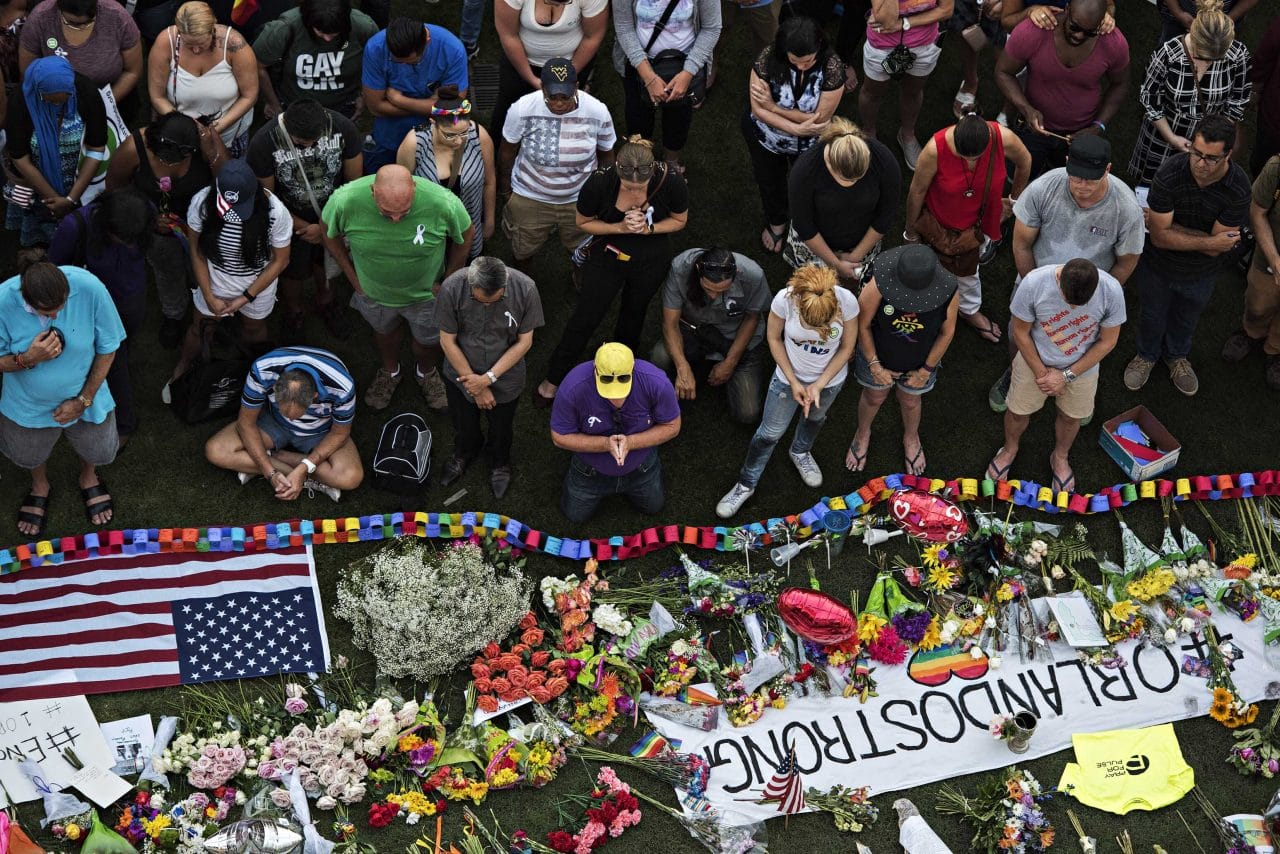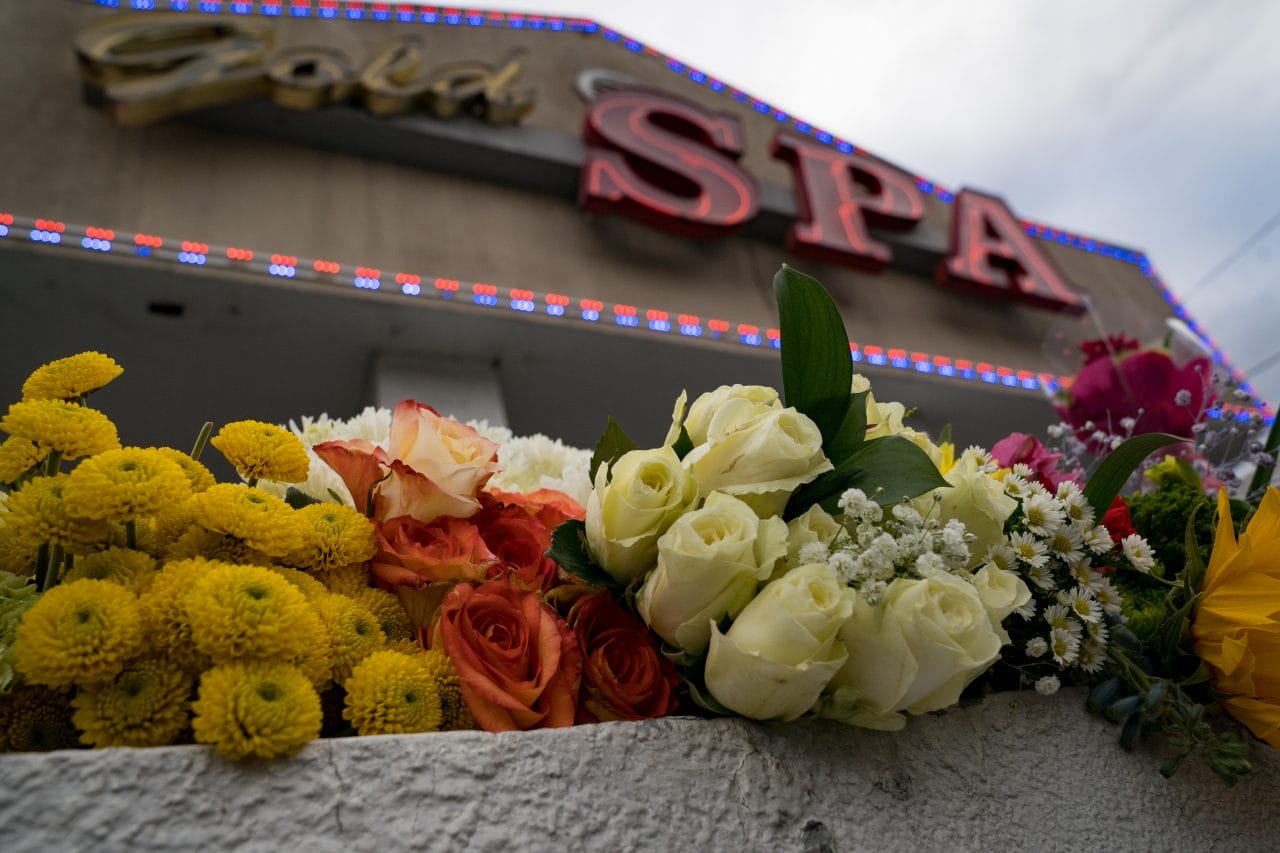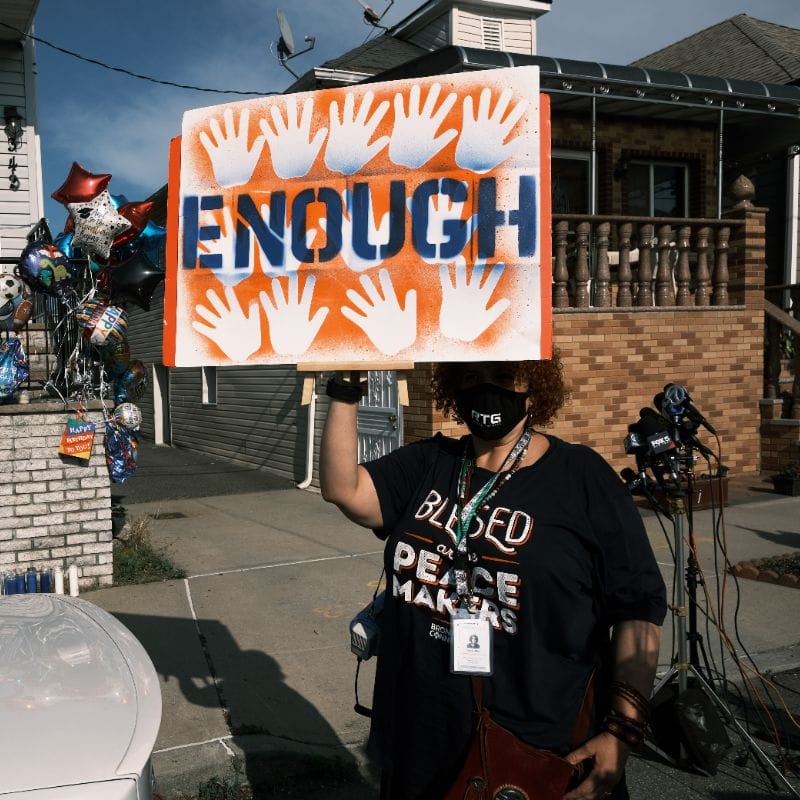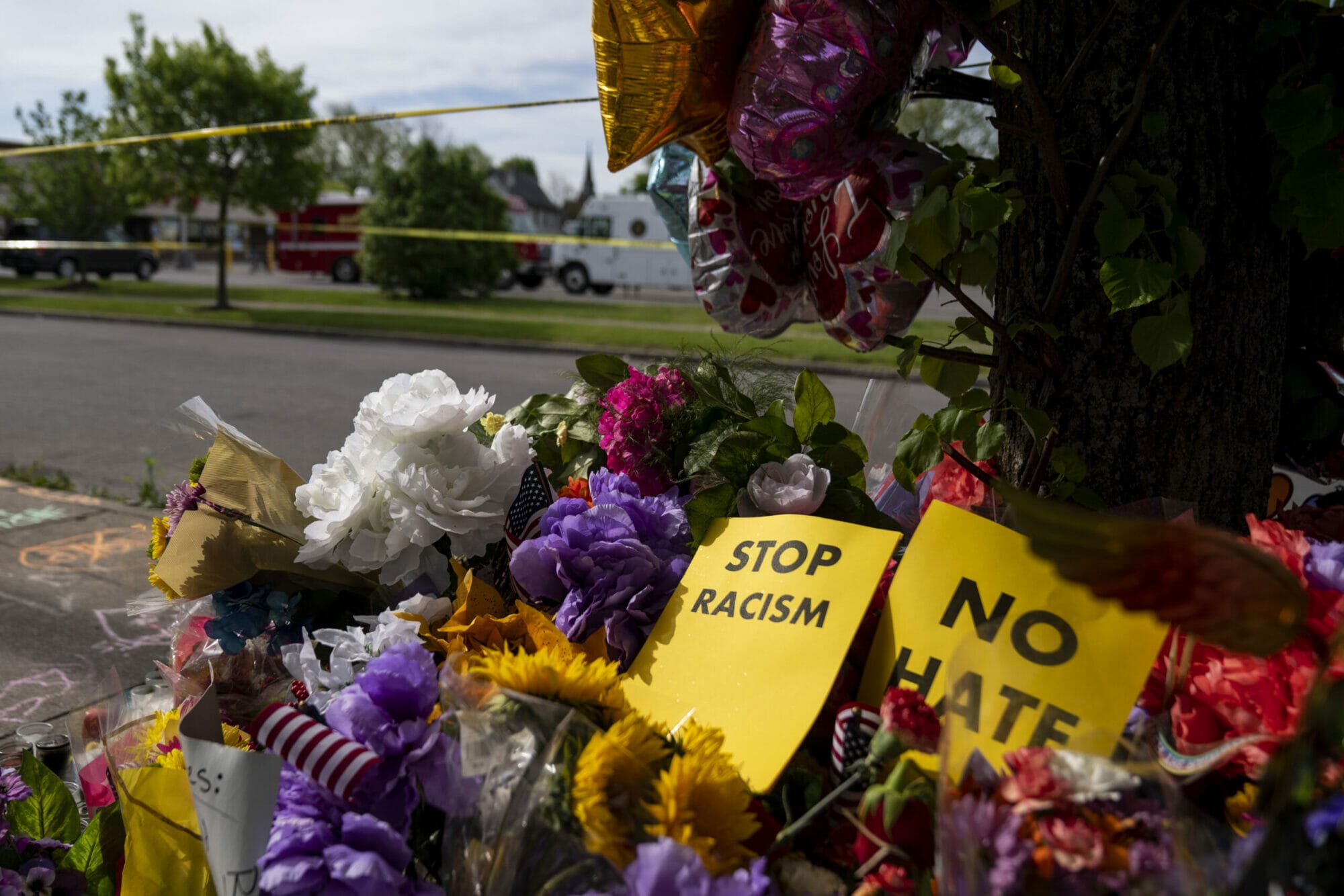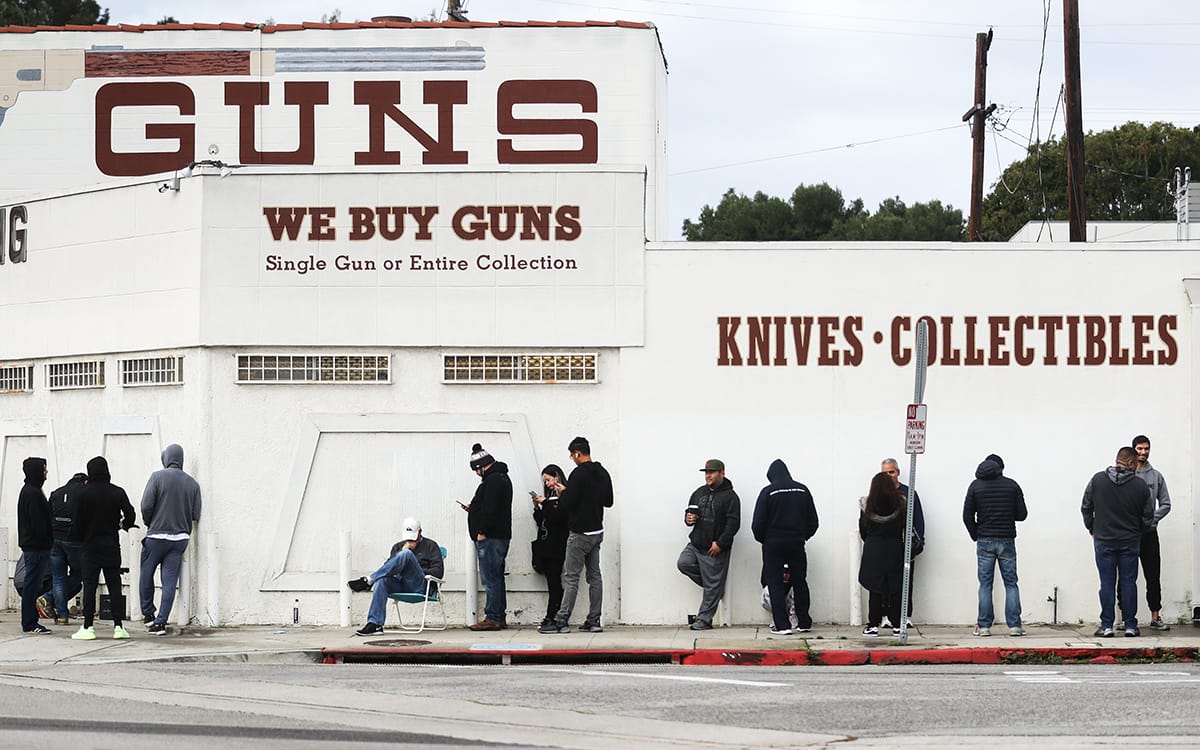
Gun Violence in Asian and Pacific Islander Communities
Introduction
In March 2021, eight people, including six Asian women, were shot and killed at three spas across metropolitan Atlanta. In May 2023, a man with white-nationalist, anti-Asian, and anti-Muslim beliefs opened fire at a mall in Allen, Texas, killing eight people.And since the COVID-19 pandemic began, more than one third of Asian and Pacific Islanders (API) have experienced a racially motivated hate incident.1 In light of this violence, there has been renewed attention on how gun violence impacts Asian and Pacific Islander communities.Incidents of anti-Asian hate and violence, along with the increasing bias and bigotry against APIs, have illustrated the deadly intersection of firearms and hate, as well as ignited a conversation about guns and gun violence in these communities.
While these hate motivated attacks—both the large scale and the everyday—have undermined a sense of safety in API communities, the toll that gun violence takes extends much further. Over just a two day period at the beginning of 2023, there were two shootings that primarily impacted people of Chinese and Southeast Asian descent.On January 21, 2023, during a Lunar New Year Festival, 11 people were fatally shot and nine were injured at Star Ballroom Dance Studio in Monterey Park, California. Shortly after, in a fit of workplace rage, seven people, four of whom were Chinese citizens, were fatally shot at two nearby farms in Half Moon Bay, California. While these two events in California were not racially motivated, they nonetheless reveal how gun violence threatens the safety and well-being of these communities, extending far beyond hate crimes.
In fact, gun violence is up among API communities, and firearm suicides are taking an ever-increasing toll as the compounding effects of COVID-19 and race-based discrimination have exacerbated mental health concerns.2 Furthermore, 57% of Asian parents are concerned about their children being killed by gun violence, just behind Black parents (58%) and in stark contrast to 33% of white parents.3
These incidents and the data described in this memo make one thing clear: Asian and Pacific Islander communities have not been spared from our nation’s gun violence epidemic. Asian Americans lose an average of 43.4 potential life years4 due to suicide and 41.7 potential years from homicides, the second highest among all racial and ethnic groups, showing the far reaching burden of this crisis.5 Asian and Pacific Islander communities, like all communities, need and deserve real action and real solutions to gun violence.
On Ethnic Group Terminology
This memo gathers data from the Centers for Disease Control and Prevention (CDC),6 where demographic data is separated by racial and ethnic groups. In 2021, the CDC separated the API category to two separate groupings: “Asian” and “Native Hawaiian or Other Pacific Islander.” Individuals within the “Asian” category may have origins from East Asia, Southeast Asia, and South Asia from countries such as China, India, Japan, Korea, the Philippines, or Vietnam. Within the “Native Hawaiian or Other Pacific Islander” group, individuals identify as Hawaiian, Guamanian, Samoan, or from other Pacific Island communities and nations.
In this memo, we have separated Asian Americans and Pacific Islanders when sufficient data was available to provide as much detail and distinction between these categories to acknowledge how gun violence affects these communities of varying histories, cultures, and geographies differently.
GET THE FACTS
Gun violence is a complex problem, and while there’s no one-size-fits-all solution, we must act. Our reports bring you the latest cutting-edge research and analysis about strategies to end our country’s gun violence crisis at every level.
Learn More
National Trends
Roughly 536 Asian Americans and 60 Pacific Islanders are killed in acts of gun violence every year.7 As is the case nationally, the majority (62%) of these gun deaths are suicides. Homicides comprise about 37% of all gun deaths in these communities.8
While each of these gun deaths takes a devastating toll on families and communities, available data suggests that rates of gun violence in API communities are lower than those of other racial and ethnic groups. For example, from 2018 to 2022, the national gun death rate was 5 times higher than the Asian American gun death rate and 1.4 times greater than the Pacific Islander gun death rate.9 During that same time period, APIs accounted for roughly 7% of the population but only 1.5% of total gun deaths, 1.5% of firearm homicides, and 1.5% of firearm suicides.10
Although gun deaths have historically been lower among APIs, they have been steadily rising in recent years. From 2018 to 2022, the Asian American gun death rate, the gun homicide rate, and the gun suicide rate rose similarly (11.5%, 11.8%, and 10.8%, respectively). For Pacific Islanders, the total gun death rate rose 10.9% and gun homicide rate increased by 6.6%.11Contrastingly, the national gun death rate rose 20% during the same period, but the increase was driven mostly by a 38% rise in gun homicides. Firearm suicides rose only 8.6% nationally.12
Ethnic-Specific Trends
As of the 2020 Census, approximately 25.6 million API people—24 million people of Asian descent and 1.6 million people of Native Hawaiian or Pacific Islander descent—currently live in the US, making up nearly 8% of the total population.13 Individuals under the API umbrella can trace their heritage to dozens of different regions, countries, and ethnic groups around the globe. In the US, people of East Asian descent make up the largest subgroup under the API umbrella,14 but no subgroup makes up a majority.
While these groups are often pooled under the API banner for statistical analysis, research shows that there are meaningful disparities among APIs. For example, in 2019, the annual median household income was about $86,000 for Asian Americans and $66,700 for Pacific Islanders, both above the national annual median income ($61,000).15 However, Asian Americans experience the largest annual median household income gap among all racial/ethnic groups. Asian Indian Americans had a median household income of $110,000, whereas Burmese Americans had an annual median household income of only $44,000.16
For decades, community leaders and scholars alike have called for data disaggregation,17 or the practice of separating data by ethnic group to help unmask differences among these distinct groups. Data disaggregation allows a fuller, more nuanced understanding as to the impacts of gun violence on these individual communities.
In 2018, the CDC began publishing disaggregated data on 11 separate API groups.18 The following data uses this new CDC data to showcase the disparate impact of gun violence on individual Asian and Pacific Islander communities.
The data shows that Pacific Islanders, as well as South and Southeast Asians, experience gun violence at much higher rates than East Asians. Among all API ethnic subgroups with disaggregated data, Samoans had the highest total gun death rate (8.0 per 100,000), the highest firearm homicide rate (5.1 per 100,000), and the highest firearm suicide rate (2.7 per 100,000).19 The Samoan total gun death rate was nearly three times the API total gun death rate.20 Additionally, the Samoan firearm homicide rate was five times higher than the API firearm homicide rate, while the Samoan firearm suicide rate was 1.5 times higher than the API firearm suicide rate.21 Pacific Islander groups had three times greater higher total gun death rate and firearm suicide rates than other Asian ethnic subgroups.
Among the Asian ethnic subgroups, the “Other Asian” category, which includes aggregate data from mainly South and Southeast Asian ethnicities not disaggregated by the CDC, had the highest total gun death, firearm homicide, and firearm suicide rates.22
Among Asian ethnic groups with disaggregated data, Vietnamese had the highest total gun death rate (3.3 per 100,000) followed by Koreans (2.6 per 100,000). Asian Indians also saw a higher rate of gun homicides (0.8 per 100,000) just after Vietnamese gun homicides (1.2 per 100,000).23 Koreans and Vietnamese had similarly higher rates of firearm suicide (2.0 per 1000,000 and 1.9 per 100,000) among Asian Americans.24
Suicide
Although the API suicide rate is half of the national average, there have been concerning trends in gun suicide deaths in this community. Between 2019 and 2022 there was a 9.8% increase in firearm suicide rates among Asian Americans and 7.1% among Pacific Islanders and the number continues to rise steadily.25 The role of firearms in fueling violent deaths among API communities is changing as firearm suicides among Asian Americans rose quicker (20%) than all-cause suicides (12%).26
While researchers are still working to understand the factors underlying the rise in suicides among API communities, preliminary research suggests that many of the social and economic upheavals of the COVID-19 pandemic, as well as increasing anxiety about bias-motivated crime, may have contributed to these emerging trends.
API youth and young adults have been particularly impacted by rising gun suicides. Data shows that between 2018 and 2022, 15% of firearm suicides in API communities involved 20- to 24-year-olds.27 One study found that suicide rates among young Asian Americans had grown as a consequence of the disproportionate effect of economic disruptions this group faced during COVID-19.28 In fact, two-thirds of young adult Asian Americans reported increased symptoms of depression during this period.29 Additionally, a survey of adolescent and young adult Asian Americans found that 76% felt less safe since the beginning of the COVID-19 pandemic due to anti-Asian racism.30 Combined, the mental health toll of racism and anti-Asian bias in recent years may have exacerbated suicide risk.31
Hate Crimes
The landscape of how API communities were seen rapidly changed during the COVID-19 pandemic. Falsehoods that the ravaging virus originated from people of Chinese descent proliferated, fostering anti-Asian sentiments and hatred in online discourse. This misinformation had real-world consequences—including an onslaught of racist and discriminatory behavior and even violence against Asians across America.32
In 2022 alone, there were 11,613 reported total hate crimes in America, 500 of which were anti-Asian hate crimes.33 Yet, research has repeatedly shown that hate crimes are severely underreported leading to a misrepresentation of this landscape.34 From 2019 to 2020, the total number of hate crimes in 18 large cities across the US declined 6%; yet hate crimes targeting Asians rose 145%.35 Currently, 86% of Asian Americans now believe that racism is a serious issue in the country.36 Clearly, this period has placed API communities in a perilous spot facing the double threat of violence and virulent pandemic.37
Fifty-seven percent of Asian Americans feel that the anti-Asian rhetoric is a serious problem, and this perceived danger is real.38 Since the COVID-19 pandemic began, 44% of Asian American adults under the age of 40 have reported knowing of someone being attacked or harassed because of their race.39 Moreover, 34% of API adults also experienced race-based hate incidents in the form of verbal harassment and slurs just between 2022 and 2023, and 65% of these victims believe that they will continue to be targets for discrimination.40 As experiences of racially charged hate crimes and abuse have increased since COVID-19, increased anxiety, fear, and depression become more common within API communities as well.41
Rise in Gun Purchasing
While the COVID-19 pandemic increased rates of anti-Asian hate and violence, it has consequently pushed more Asian Americans to seek out means of protecting themselves. Recent polling and anecdotal data suggests that gun buying may have accelerated in API communities. Indeed, as Asian Americans have felt more threatened or experienced racism during this period, data has shown that they have been more likely to purchase a firearm.42 The national firearms survey, for example, shows that overall gun owners predominantly self-identify as “white” (73%) with only 5% identifying as “other,” including APIs. However, during the pandemic, gun buyers were more likely to be people of color, with 9% identifying as “other,” again including APIs.43 This data suggests that gun buying among APIs may have been on the rise both before and during the pandemic. Importantly, the increased gun purchasing could have devastating consequences and push rates of gun violence even higher.44
The impact of API gun violence during COVID-19 is an inflection point in gun ownership in America. Even among Asian American gun owners, those who experienced increased racial discrimination were more likely to carry their firearms more frequently.45 In fact, mental stress experienced from anti-Asian hatred and fear from the onset of COVID-19 has been found to increase alcohol consumption among Asian Americans.46 Subsequently, this increased alcohol consumption and mental distress has been associated with more gun purchasing.47 The indirect yet powerful network of social, psychological, and racial events experienced by APIs in recent years has demonstrated the extent to which gun violence is bolstered by a myriad of issues experienced in the nation.
Noticing the trend in gun buying among API communities, the gun lobby, which has long capitalized on xenophobic, racist, fear-mongering messaging, is now courting new customers.48 Leading members of the gun lobby have created groups and have increased their marketing of firearms to the API community.49 And API gun owner groups have even sprouted to educate and give a new sense of community to this emerging group of gun owners.50
The gun lobby’s marketing of firearms as a measure of safety in fact contradicts research that demonstrates how dangerous the presence of a gun is in a home, especially increasing the risk of firearm suicide. Studies have shown that firearm access can triple the risk of suicide.51 Additionally, teen and youth firearm suicide can largely be attributed to access to household firearms, often belonging to a parent or other family member. Research also demonstrates that household firearms increase the risk of homicide, including intimate partner homicides.52
Conclusion
Asian and Pacific Islanders are the fastest growing racial/ethnic group in the country.53 As the gun lobby increasingly targets Asian and Pacific Islanders to join their ranks, our leaders must do more to enact the kinds of policies that help mitigate the risk of gun violence. Data has shown that Asian Americans across different ethnic subgroups support stronger gun safety laws54 and believe that gun safety is of paramount importance when voting in elections. Asian and Pacific Islanders, just like all Americans, deserve to live free from gun violence, and deserve legislators who can make this dream a reality.
MEDIA REQUESTS
Our experts can speak to the full spectrum of gun violence prevention issues. Have a question? Email us at media@giffords.org.
Contact
- “Many From AAPI Communities Have Endured Discrimination, and a Third Experiened a Hate Inicident In the Last Year,” Amplify AAPI Monthly survey, AP-NORC Center for Public Affairs Research and AAPI Data, October 2023. https://apnorc.org/projects/many-within-asian-american-and-pacific-islander-communities-have-endured-discrimination-and-a-third-experienced-a-hate-incident-in-the-last-year/.[↩]
- Sasha Zhou, Rachel Banawa, and Hans Oh, “The Mental Health Impact of COVID-19 Racial and Ethnic Discrimination Against Asian American and Pacific Islanders,” Frontiers in Psychology, (2021).[↩]
- John Gramlich, “Gun deaths among U.S. children and teens rose 50% in two years,” Pew Research Center, April 6, 2023, https://www.pewresearch.org/short-reads/2023/04/06/gun-deaths-among-us-kids-rose-50-percent-in-two-years/.[↩]
- Potential life years lost is an estimated average of how many more years they would have lived had they not died, in this case by gun violence.[↩]
- Gregory M. Zimmerman, Emma E. Fridel, and Daniel Trovato, “Disproportionate Burden of Violence: Explaining Racial and Ethnic Disparities In Potential Years Of Life Lost Among Homicide Victims, Suicide Decedents, and Homicide-Suicide Perpetrators,” Plos One 19(2), (2024).[↩]
- CDC final mortality data is available through 2021. Provisional counts, which historically have been very close to final counts, were used for 2022 data in this memo.[↩]
- Centers for Disease Control and Prevention, Wide-ranging Online Data for Epidemiologic Research (WONDER), “Multiple Cause of Death Files, 2018-2021, and from provisional data for years 2022-2024,” Accessed on March 25, 2024, https://wonder.cdc.gov/controller/saved/D176/D387F220.[↩]
- Firearm suicides account for 59.8% of all API gun deaths followed by firearm homicides (36.2%), and unintentional gun deaths (1.2%).See Centers for Disease Control and Prevention, Wide-ranging Online Data for Epidemiologic Research (WONDER), “Multiple Cause of Death Files, 2018-2021, and from provisional data for years 2022-2024,” Accessed on March 25, 2024.[↩]
- Id.[↩]
- Id.[↩]
- Id. Gun suicide rate changes were unavailable for Pacific Islanders as data from 2018 was insufficient (numerator for calculating rates were less than 20).[↩]
- Id.[↩]
- Nicolas Jones, et al., “2020 Census Illuminates Racial and Ethnic Composition of the Country,” US Census Bureau, August 12, 2021, https://www.census.gov/library/stories/2021/08/improved-race-ethnicity-measures-reveal-united-states-population-much-more-multiracial.html.[↩]
- People of East Asian descent are those who can trace their ethnic heritage to the Chinese, Japanese, Korean, Mongolian, Okinawan, and Taiwanese ethnicities.[↩]
- “Native Hawaiian and Pacific Islander Health,” U.S. Department of Health and Human Services Office of Minority Health, Last accessed April 10, 2024, https://minorityhealth.hhs.gov/native-hawaiian-and-pacific-islander-health.[↩]
- Abby Budiman and Neil G. Ruiz, “Key Facts About Asian Origin Groups In the U.S.,” Pew Research Center, April 21, 2021, https://www.pewresearch.org/fact-tank/2021/04/29/key-facts-about-asian-origin-groups-in-the-u-s/#:~:text=Asian%20households%20in%20the%20U.S; Lok Siu and Jamie Noguchi, “The Asian American Wealth Gap, Explained In a Comic,” Vox, June 14, 2021, https://www.vox.com/identities/22530103/asians-americans-wealth-income-gap-crazy-rich-model-minority.[↩]
- Adrian Bacong, Alex Nguyen, and Anna K. Hing, “Making The Invisible Visible: The Role Of Public Health Critical Race Praxis In Data Disaggregation Of Asian Americans And Pacific Islanders In The Midst Of The COVID-19 Pandemic,” AAPI Nexus Journal: Police, Practice and Community 17, no. 1&2, (2019); Nadia Shilpi Islam et al., “Methodological Issues In the Collection, Analysis, and Reporting of Granular Data in Asian American Populations: Historical Challenges and Potential Solutions,” Journal of Health Care for the Poor and Underserved, 21(4), 1354–1381.; Sobha Srinivasan and Tessie Guillermo, “Toward Improved Health: Disaggregating Asian American and Native Hawaiian/Pacific Islander Data,” American Journal of Public Health 90, no. 11 (2000): 1731-4, doi:10.2105/ajph.90.11.1731.[↩]
- The 15 groups within this categorization include: White, Black, American Indian or Alaska Native, Asian Indian, Chinese, Filipino, Japanese, Korean, Vietnamese, Other Asian, Hawaiian, Guamanian, Samoan, Other Pacific Islander, and More than One Race. This data was only available for the years 2018-2022.[↩]
- Centers for Disease Control and Prevention, Wide-ranging Online Data for Epidemiologic Research (WONDER), “Multiple Cause of Death Files, 2018-2021, and from provisional data for years 2022-2024,” Accessed on April 3, 2024.[↩]
- See Id. The API gun death rate was 2.8 per 100,000 while the Samoan gun death rate was 8.03.[↩]
- API firearm homicide rates were 1.08 per 100,000, firearm suicide rates were 1.78 per 100,000 between 2018-2022.[↩]
- Id.[↩]
- Among other Asian ethnic groups (Chinese, Filippino, Japanese, and Korean) the crude firearm homicide rate remained below 0.5 per 100,000 from 2018-2022.[↩]
- The Asian American firearm suicide crude rate was 1.73 per 100,000 per 100,000.[↩]
- Id.[↩]
- Id.[↩]
- Id. Asian American and Pacific Islander data was aggregated here as there was insufficient information for each age group in the separated racial categories.[↩]
- Kodai Kusano, Ayse K. Uskul, and Markus Kemmelmeier, “Suicide During the COVID-19 Pandemic: Uncovering Demographic and Regional Variation in the United States and Associations with Unemployment and Depression,” Current Research in Ecological & Social Psychology, (2023).[↩]
- James Huynh et al., “The Mental Health of Asian American Adolescents and Young Adults Amid the Rise of Anti-Asian Racism,” Frontiers in Public Health, (2023).[↩]
- Id.[↩]
- John Gramlich, “Gun Deaths Among U.S. Children and Teens Rose 50% in Two Years.,” Pew Research Center, April 6, 2023, https://www.pewresearch.org/short-reads/2023/04/06/gun-deaths-among-us-kids-rose-50-percent-in-two-years/.[↩]
- Yulin Hswen et al., “Association of “#covid19” Versus “#chinesevirus” With Anti-Asian Sentiments on Twitter: March 9–23, 2020,” American Journal of Public Health, (2021).[↩]
- “Hate Crime,” United States Department of Justice, Federal Bureau of Investigations, Crime Data Explorer, Accessed on March 25, 2024.[↩]
- Sergio Olmos, “Researchers Say the FBI’s Statistics On Hate Crimes Across the Country Are Flawed,” National Public Radio, January 1, 2023, https://www.npr.org/2023/01/01/1145973412/researchers-say-the-fbis-statistics-on-hate-crimes-across-the-country-are-flawed.[↩]
- Anti-Asian incidents increased 145% from 2019 to 2020. Additionally, more than 10,000 incidents were reported to Stop AAPI Hate from March 2020 to September 2021. See Center for the Study of Hate and Extremism, “FACT SHEET: Anti-Asian Prejudice March 2021,” CSU San Bernardino, March 2021, https://www.csusb.edu/sites/default/files/FACT%20SHEET-%20Anti-Asian%20Hate%202020%20rev%203.21.21.pdf.[↩]
- “Many From AAPI Communities Have Endured Discrimination, and a Third Experiened a Hate Inicident In the Last Year,” Amplify AAPI Monthly survey, AP-NORC Center for Public Affairs Research and AAPI Data, October 2023. https://apnorc.org/projects/many-within-asian-american-and-pacific-islander-communities-have-endured-discrimination-and-a-third-experienced-a-hate-incident-in-the-last-year/.[↩]
- Neil G, Ruiz, Carolyne Im, and Ziyao Tian, “Discrimination Experiences Shape Most Asian Americans’ Lives,” Pew Research Center, November 30, 2023, https://www.pewresearch.org/race-ethnicity/2023/11/30/asian-americans-and-discrimination-during-the-covid-19-pandemic/.[↩]
- Id. https://www.pewresearch.org/race-ethnicity/2023/11/30/asian-americans-views-of-anti-asian-discrimination-in-the-u-s-today/.[↩]
- Katherine Schaeffer, “Key Facts About Americans and Guns,” Pew Research Center, September 13, 2023, https://www.pewresearch.org/short-reads/2023/09/13/key-facts-about-americans-and-guns/.[↩]
- “Many From AAPI Communities Have Endured Discrimination, and a Third Experiened a Hate Inicident In the Last Year,” Amplify AAPI Monthly survey, AP-NORC Center for Public Affairs Research and AAPI Data, October 2023. https://apnorc.org/projects/many-within-asian-american-and-pacific-islander-communities-have-endured-discrimination-and-a-third-experienced-a-hate-incident-in-the-last-year/.[↩]
- James Huynh et al., “The mental health of Asian American adolescents and young adults amid the rise of anti-Asian racism,” Frontiers in Public Health, (2023); Sasha Zhou, Rachel Banawa, and Hans Oh, “The Mental Health Impact of COVID-19 Racial and Ethnic Discrimination Against Asian American and Pacific Islanders,” Frontiers in Psychology, (2021).[↩]
- Tsu-Yin Wu et al., “Examining racism and firearm-related risks among Asian Americans in the United States during the COVID-19 pandemic,” Preventive Medicine Reports 27, (2022).[↩]
- Matthew MIller, Wilson Zhang, and Deborah Azrael, “Firearm Purchasing During the COVID-19 Pandemic: Results from the 2021 National Firearms Survey,” Annals of Internal Medicine 175, no. 2 (2022): 219-225.[↩]
- The term Asian American is used here because the articles on gun buying specifically mention Asian American gun buying and do not discuss gun buying amongst Native Hawaiian and/or Pacific Islander communities.[↩]
- Tsu-Yin Wu et al., “Examining racism and firearm-related risks among Asian Americans in the United States during the COVID-19 pandemic,” Preventive Medicine Reports 27, (2022).[↩]
- Id.[↩]
- Id.[↩]
- “How the Firearms Industry Markets Guns to Asian Americans,” Violence Policy Center, September 2021, https://vpc.org/studies/AAPI2021.pdf.[↩]
- Id.[↩]
- Claire Wang, “Asian Americans are Buying Guns in Record Numbers. What’s Caused This Surge?” The Guardian, August 16, 2022. https://www.theguardian.com/us-news/2022/aug/16/asian-americans-gun-ownership.[↩]
- Andrew Anglemyer, Tara Horvath, and George Rutherford, “The Accessibility of Firearms and Risk for Suicide and Homicide Victimization Among Household Members: A Systematic Review and Meta-Analysis.” Annals of Internal Medicine 160, no. 2 (2014): 101-110.[↩]
- Renee M. Johnson et al. “Who Are the Owners Of Firearms Used In Adolescent Suicides?” Suicide and Life-Threatening Behavior 40, no. 6 (2010): 609-611.[↩]
- Abby Budiman and Neil G. Ruiz, “Key Facts About Asian Origin Groups In the U.S.,” Pew Research Center, April 21, 2021, https://www.pewresearch.org/fact-tank/2021/04/29/key-facts-about-asian-origin-groups-in-the-u-s/#:~:text=Asian%20households%20in%20the%20U.S.[↩]
- “Gun Violence Widely Viewed as a Major – and Growing – National Problem,” Pew Research Center, June 28, 2023, https://www.pewresearch.org/politics/2023/06/28/gun-violence-widely-viewed-as-a-major-and-growing-national-problem/.[↩]
